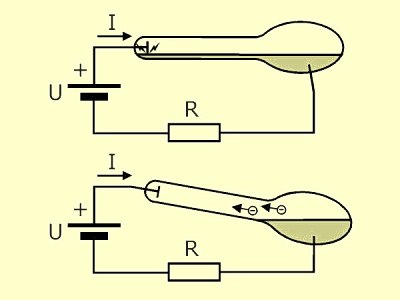Original Hanau 'Kleinen Künstlichen Höhensonne'
TILT-IGNITION
A common contact ignition method for low
pressure mercury vapour arc discharge
tube sunlamps was the so-called tilt
ignition. The tube contained an anode and
a cathode, the latter in the form of a pool
of mercury, and was manually tilted until
the mercury reached the anode. The
mercury now conducted the full
short-circuit current, only limited by a
serial ballast. When the tube was tilted
back slowly, the mercury would eventually
disconnect from the anode, causing a
small arc discharge (a spark) at the place
where the last contact occurred. This
discharge would locally cause some
mercury to evaporate and the gas
pressure and the temperature within the
tube would rise slightly. This caused an
environment in which a small arc
discharge could develop, rising pressure
and temperature any further. After a short
while and, if necessary, some repeated
tilting forth and back, the arc discharge
would become continuous even when the
tube was tilted back completely and gas
pressure and temperature would adjust
themselves to the steady state working
conditions of the circuit. The Original
Hanau 'Kleinen Künstlichen Höhensonne'
on display here, was equipped with two
parallel tubes allowing for AC-operation.
Tilting the assembly was done by turning
the large knob at the backside of the reflector.

